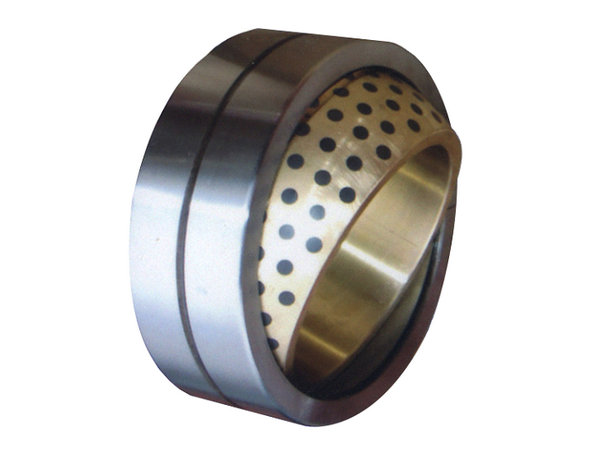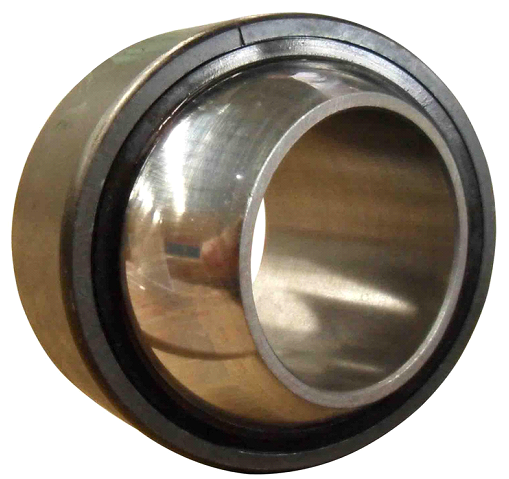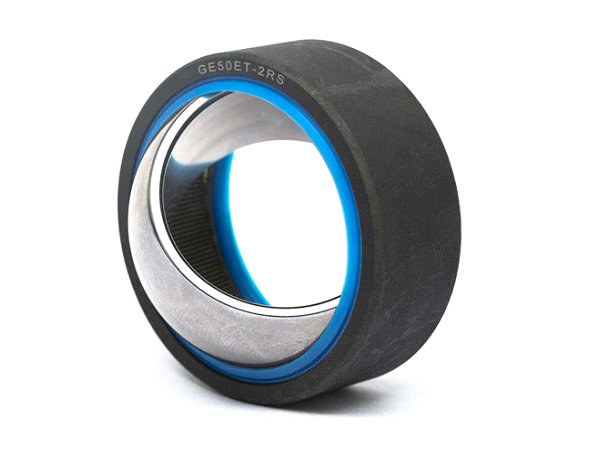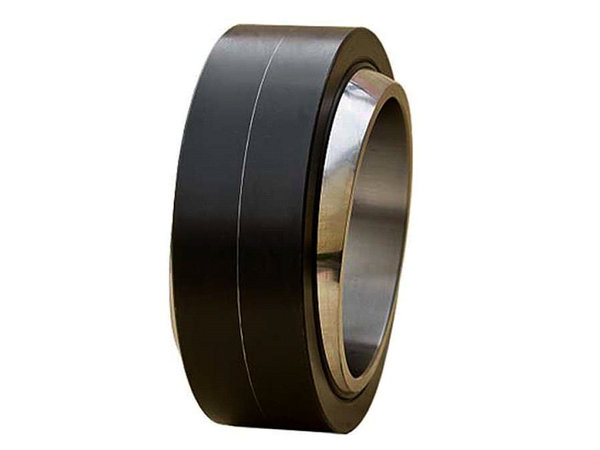Rolling bearing and plain bearings
2017-11-17
The bearings for rotary movement are designed as rolling bearings or plain bearings. As for the parts can be generated between the 6014 cross axis of the mobile force is transmitted through the rolling or sliding components are different.
Rolling bearings
Rolling bearings generally consist of two raceways with a complete raceway. Rolling element The cross shaft copper sleeve is installed between the rings and rolls on the raceway. The rolling parts can be balls, cylindrical rollers, needle rollers, tapered rollers or barrel rollers. Rolling components are generally guided through the cage, so that they maintain a uniform distance between each other to prevent mutual contact. In needle roller bearings and tensioning spherical roller bearings, the cage also ensures that the rolling elements are positioned correctly. When the bearings can be disassembled, the cage unites the rolling elements together and makes bearing installation easier. For special applications, with full complement ball bearings, the use of cylindrical rollers or needle roller.
Steel is a standard material for sheet metal cages, and some applications use 6014 spider bushing brass. Fixed cages are made of brass, steel, glued fabric and other materials. Thermal backbones are also widely used, especially those nylon cages reinforced with fiberglass.
The bearing rings and rolling elements are mainly made of hardened chrome steel, although cage hardened steels are also used. Special bearings for extreme operating conditions - load, speed, temperature, corrosion - are made of temperature-resistant and / or corrosion-resistant steel, plastic, ceramic or other materials.
Rolling bearings can be open version or with one or two seals. The most common types of seals are gap seals and lip seals.
Features are applications
Each roller bearing design features that make it particularly suitable for specific bearing applications. It is impossible to formulate universally valid rules for the choice of bearing type because several factors are usually considered and weighed. In addition to load and speed, the effects of temperature, lubrication, vibration, installation, maintenance, etc. are usually also noticed. In many cases, the main dimensions of at least one bearing, usually the borehole diameter, have been determined by the adjacent structure.
Rolling bearings, which are mainly used for radial loads, are described as radial bearings. Most radial bearings can support complex loads, such as deep groove ball bearings, angular contact ball bearings, tapered roller bearings or spherical roller bearings. Cylindrical Roller Bearings N, NU, Most Needle Roller Bearings, Drawn Cup Needle Roller Bearings and Needle Roller Bearings and Cage Assemblies Only radial loads are supported.
Rolling bearings, which are mainly used for axial loads, are described as axial bearings. Axial spherical roller bearings and one-way axial angular contact can support composite axial and radial load. Other types of axial bearings are only suitable for axial loads.
If there is a small amount of radial space, you must choose with low cross-section bearings, such as needle roller and cage assemblies; a specific series of needle roller bearings with or without inner ring, deep groove ball bearings and transfer Heart roller bearings.
If there is a small amount of axial space, including single row cylindrical roller bearing series, deep groove ball bearings or angular contact ball bearings for radial and composite load. For axial loads, axial needle roller and cage assemblies, axial needle roller bearings or axial deep groove ball bearings are used.
Another feature is how the bearing guides the shaft. Bearings that allow axial displacement, bearings that guide one shaft in one or both axial directions, and bearings that allow angular adjustment, and bearings that allow eccentricity of adjacent structures Bearings Dimensions Mainly due to the size and type of load - Dynamic or static - Bearing capacity and load bearing life and bearing reliability requirements of the decision. Rotating bearings to withstand dynamic stress. If there is only a very slow relative movement between the bearing rings, the bearings are subjected to a static load in the event of a rotational movement or a steady state load. Roller bearings can generally withstand higher loads than ball bearings if the external dimensions are the same. Ball bearings are commonly used for small or medium loads, while roller bearings are often used for higher loads and larger shaft diameters.
Slide bearings
The function of a plain bearing arrangement, like the arrangement of a rolling bearing, is to support the components that guide the movement between them. They must support and transmit the forces that are generated under this clock. Rolling elements separate the bearing elements in a rolling bearing arrangement from one another - Rolling elements - Moving elements in a plain bearing arrangement - Typically shafts, uprights or strips - Sliding surfaces on static bearing pads, bearing outer rings or sliding strips Slide on. Sliding movement occurs directly between the sliding layer of the bearing body and the finished part. Lubrication is ensured by deep lubrication or a solid layer for a carrier. In radial movement, the clearance between the shaft and the sliding layer ensures the mobility of the sliding partner.
Plain bearings can be used as radial bearings, axial bearings, strip, outer ring and many other designs. They run quietly and are particularly well suited to supporting high loads under relatively slow rotation, as well as rotary motion and high / low temperature environments. Because of their general characteristics, they are used almost exclusively in all industrial sectors, especially where available bearing configurations have limited space.
Permaglide® plain bearing material
The sliding material can be Permaglide P1 and P2. Permaglide® P1 is maintenance-free product suitable for dry operation. Products made from this material are particularly suitable where the bearings must be maintenance-free, lubricants may be inadequate, or existing lubricants meet requirements. P1 can not only be used for rotary motion and vibration, but also for linear motion with short stroke. Low-wear materials have good sliding properties, low coefficient of friction and high chemical resistance. Permaglide® is not hygroscopic - highly resistant to swelling - and can not be welded to metal. It is suitable for operation under hydraulic operating conditions. Maintenance-free Permaglide® materials can be used in variants P10 and P11 as well as lead-free variants P14 and P141.
Permaglide® P2 is a low-maintenance, low-wear material with good damping characteristics and long relubrication cycles. It can be used for rotational movements and oscillations with low susceptibility to edge loads and shocks. Low maintenance Permaglide® materials are available in variants P20, P21, P22 and P23.
Products can be used as a sleeve, flange blue sleeve, thrust outer ring and strip. Bushings, gaskets and abrasive tapes are made of maintenance-free Permaglide® P1 or low-maintenance P2, flanged bushing made of P1. There are various special designs.
The service life of a plain bearing is closely related to the load, sliding speed, mating path, temperature and continuous running time. Other limitations, such as contamination, dry-running corrosion, or possible lubricant aging may occur. The basic life is just a guideline. The bearing size is determined on the basis of load generation, bearing support capacity, unknown bearing operating stability and operating life requirements.
Because of the calculation under operating conditions, the test does not take into account many external factors that affect the plain bearings and can not give the most reliable information on usage and lifetime in specific applications.
Hunan Jintai Hardware and Machinery Co.,Ltd. is a professional manufacturer on various kind of bearings over 15 years China factory.
We are making all kinds of slide bearings including DU PTFE composit bushing, DX POM composite bushing,bimetal bushing,wrapped bronze bushing, cast sliding bushings and wear plate bearing pad, sintered bronze bushing and sintering parts, ball transfer bearings, etc.
The shapes of bearings can be in sleeve, flanged, spherical, plate, washer, pad, ring, square etc.
Base materials in carbon steel, harden steel, iron, stainless steel, bronze, brass, copper, bronze-steel alloy.Lubricant materials in PTFE, teflon, POM, nylon, plastic, oil, graphite, grease, MoS2, etc.
Export to America,Canada,Brazil,Peru,Argentina,Chile,Paraguay,Europe,Finland,France,Germany,Italy,Spain,Sweden,
Britain,Estonia,Ukraine,Turkey,Austrial,Russia,Korea,Malaysia,Singapore,Thailand,Egypt,Kenya,Somali,
Congo,Zimbabwe,South Africa,etc.












 (Chat Online)
(Chat Online)







